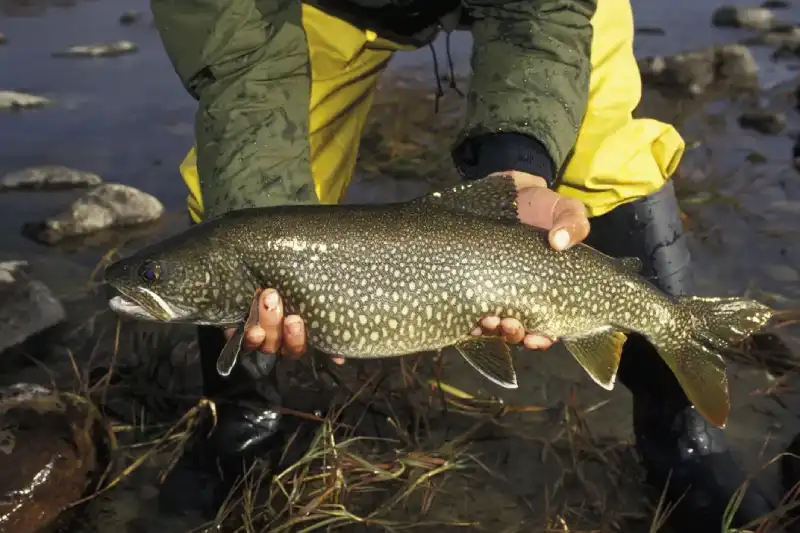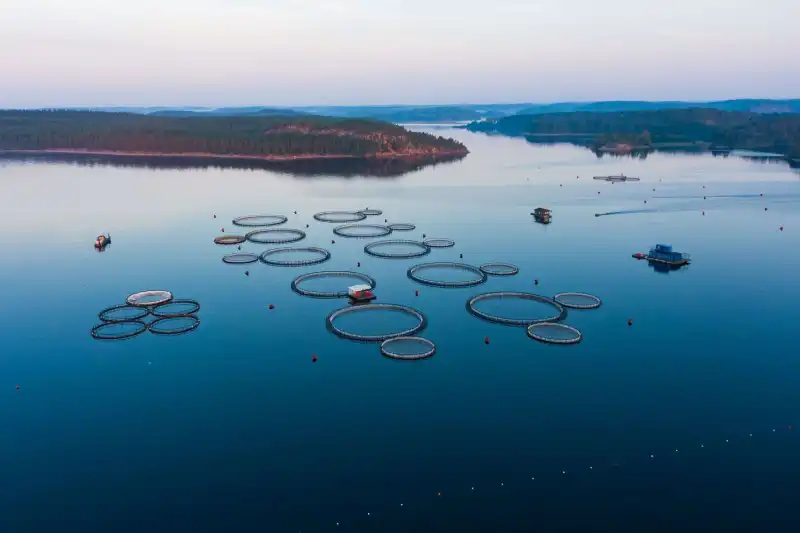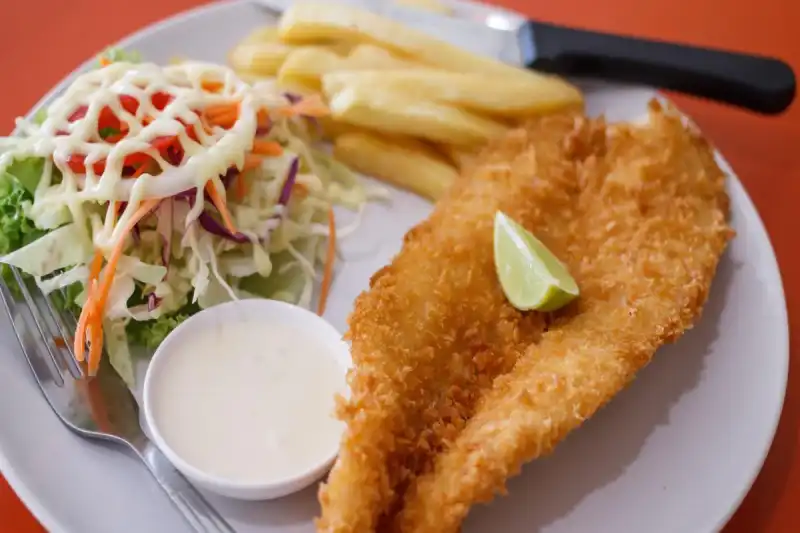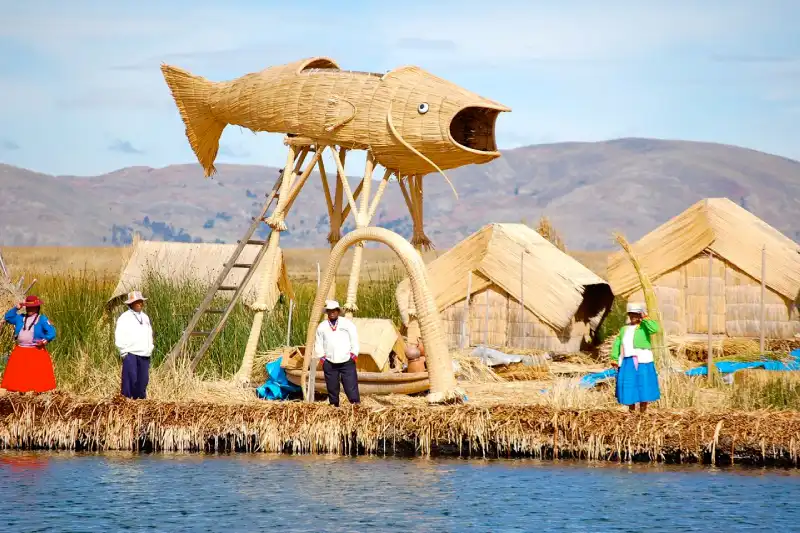The waters of Lake Titicaca are rich in more than one way. Here, trout farming has found a place to develop. The Puno Region industries has adopted Lake Titicaca’s trout farming as a way to improve life quality.
This blog post takes you on a unique journey. From the icy depths where trout grows, to your dining table. Experience the full circle of trout farming in this majestic lake.
We’ll uncover the secrets behind sustainable trout breeding. Learn about the techniques that ensure quality and eco-friendliness. Discover how these practices benefit both the environment and your health.
Join us as we explore the local communities’ roles. Their ancient wisdom and modern methods merge to cultivate the finest trout. Witness how this aquaculture supports and enriches their lives.
Whether you’re a food enthusiast or an eco-tourist, this story will captivate you. Dive in to understand the principles of trout farming. In your next Lake Titicaca visit, make sure to try some fresh trout from the lake.
In the vast expanse of Lake Titicaca, trout farming is an example of sustainable aquaculture. Between Bolivia and Peru, this high-altitude lake is not just a geographical marvel. It is also the heartland of a thriving trout industry.
Lake Titicaca’s trout has become a symbol of eco-friendly farming practices. This article delves into how these practices ensure the lake’s sustainability and the prosperity of local communities.
The journey of trout began with the introduction of rainbow trout. Originating from North American waters, these trout eggs adapted well into the lake. The vision was to boost fish culture in the highest navigable lake in South America. And indeed, trout flourished, transforming the aquaculture landscape of the Puno region.

Sustainability is the cornerstone of trout farming in Lake Titicaca. Farmers in the region employ methods that protect the lake’s native species. By enclosing the trout in net covered pools in the lake.
They also preserve its pristine condition. The use of floating islands for trout cultivation is a prime example. These islands mimic natural habitats, reducing the environmental impact of farming activities.
The trout farms of Lake Titicaca operate with a deep respect for nature. They avoid the pitfalls of invasive species disrupting local ecosystems. This careful approach ensures that trout farming coexists with the preservation of native flora and fauna. It highlights the balance between human industry and environmental stewardship.
Lake Titicaca’s trout does more than just enrich local diets with high-quality protein. It fuels the economies of Bolivia and Peru, providing livelihoods for countless families. In the Puno region, trout farming intertwines with the cultivation of traditional crops like potatoes and quinoa. This integration showcases a sustainable model of agriculture and aquaculture, benefiting both land and water.
Moreover, the trout industry in Lake Titicaca has fostered a unique culinary tourism. Visitors flock to the lake not only to witness its natural beauty. They also come to savor dishes made with fresh, sustainably farmed trout. This culinary attraction supports local businesses and promotes the region’s cultural heritage.
Despite its success, Lake Titicaca’s trout farming faces challenges. Climate change and water pollution threaten the delicate lake’s ecosystem.
Farmers and researchers are responding with innovative solutions. They are developing more resilient trout breeds and improving farm management practices. These efforts aim to safeguard the future of trout farming in the Puno region.
Looking ahead, the potential of trout industry is vast. With continued commitment to sustainability. It can serve as a global model for responsible aquaculture.
The story of Lake Titicaca’s trout is a testament to human ingenuity and nature’s bounty. It is a story of how we can harness the resources of the highest navigable lake in South America. All while honoring our planet and its inhabitants.
The aquaculture benefits from the cold waters of Lake Titicaca. Here, sustainable practices show us how to use the water bodies responsibly. This practice embodies the spirit of innovation and respect for nature. It’s a shining example of how aquaculture can thrive, anchored in sustainability and community well-being.

Lake Titicaca, straddling Peru and Bolivia, is more than just a high-altitude marvel. It’s the cradle of a vibrant community, thriving on trout farming. This blog post explores the profound impact of trout farming on the villages around Lake Titicaca. Lake Titicaca’s trout isn’t just a delicacy; it’s a lifeline for many.
In the heart of South America, Lake Titicaca hosts a unique blend of cultures and ecosystems. Here, trout farming has become a pivotal part of life. Introduced decades ago, rainbow trout have found a harmonious existence in the lake. This has brought prosperity and challenges to the local communities.
The impact of trout farming extends beyond economics. It strengthens the social fabric of Lake Titicaca’s villages. Communities come together to manage trout farms, share resources, and celebrate successes. This collective effort fosters a sense of unity and cooperation among villagers.
Education and training in sustainable farming practices have become more accessible. This knowledge transfer is crucial for the future of trout farming. It ensures that the next generation can continue to thrive. The villages have become hubs of innovation in sustainable aquaculture.
As we look to the future, the villages around Lake Titicaca face challenges and opportunities. Climate change and environmental degradation pose significant threats. However, the community’s commitment to sustainable practices offers hope. Together, they are finding ways to adapt and thrive.
Lake Titicaca’s trout has become a symbol of resilience and community spirit. It shows how local initiatives can lead to substantial positive change. The story of trout farming here is a testament to the power of collective action.
Lake Titicaca’s trout has woven itself into the fabric of local communities. It has become more than a source of nutrition; it’s a source of pride. The villages around the lake stand as examples of how sustainability and tradition can create a brighter future.
In the highest navigable lake in South America, the trout farming industry continues to evolve. It remains a cornerstone of the region’s identity. Aguaculture symbolizes the harmony between people and nature. It represents hope for sustainable development in one of the world’s most extraordinary places.
Nestled at a high altitude, Lake Titicaca serves as the scenic backdrop for a unique culinary adventure. This majestic lake, shared by Bolivia and Peru, is the highest navigable lake in South America. Also It is the birthplace of a remarkable fish culture.
In the Puno region, where the lake is a cornerstone of daily life, trout farming has flourished. The introduction of North American rainbow trout to Lake Titicaca has sparked a thriving industry. This venture has intertwined with local traditions, creating a unique blend of flavors and practices.

The culinary adventure of Lake Titicaca’s trout is a testament to the region’s rich gastronomy. Preparing this prized fish involves techniques passed down through generations. Chefs and home cooks alike take pride in crafting dishes that highlight the trout’s natural flavor.
This trout graces tables in various forms. It pairs beautifully with local staples such as potatoes and quinoa, an exponent of Andean cuisine. Each dish is unique and become a staple because of the people and heritage.
The journey of Lake Titicaca’s trout from local delicacy to international cuisine showcases the global appeal of this fish. Influenced by both Bolivian and Peruvian culinary traditions, trout dishes reflect a fusion of flavors. This has attracted food enthusiasts from around the world, eager to explore the tastes of the Andes.
Restaurants around Lake Titicaca offer menus that celebrate the trout’s versatility. They combine traditional Andean ingredients with modern culinary techniques. This approach has placed Lake Titicaca’s trout on the culinary map, inviting diners to embark on a flavorful adventure.
The culinary journey of Lake Titicaca’s trout relates to the region’s commitment to sustainability. As the demand for this fish grows, so does the importance of responsible farming practices. These ensure the preservation of the lake’s natural beauty and its native species.
Looking forward, the culinary adventure of trout farming will evolve. Yet, it remains rooted in the traditions. As chefs and food artisans continue to innovate, they honor the legacy of Lake Titicaca’s trout. This ensures that future generations can enjoy the flavors that have made this fish a culinary treasure.
Puno is located in the Altiplano zone. This region has some extreme climatic conditions. Food safety for the populations was a concern. But the aquaculture helped to secure a cheap source of protein for many families.
Lake Titicaca’s trout embodies the spirit of the Andes. Its journey from the depths of South America’s highest navigable lake. This fish has become more than a meal; it’s a sustenance symbol for millions of families in the region.
As diners around the world discover the delights of Lake Titicaca’s trout. They partake in the development of Puno Region Industries. They taste the essence of a region where food is a celebration of life and community. Lake Titicaca invites us all to explore the flavors of the Andes, one dish at a time


Do not hesitate to contact us. We are an expert team and we are happy to talk to you.
+51 969 355 221
